by Dwight Walker
I wrote an article in the ICF Builder Magazine back in 2006 which outlined the history, benefits, and protection systems that were employed at that time which delivered dampproofing and wall waterproofing protection for ICF foundations. (See Dimpled Membranes for Drainage, April 2006.)
ICF building systems have made some very positive strides forward toward the “whole building” philosophy and have now become a very prominent choice in both the residential and commercial construction industry for the below and above grade construction of buildings.
In the last few years, the entire construction industry has moved toward increased energy efficiency and the “green building” concept made popular by the LEED Green Building Councils of the US and Canada. Building codes now demand better efficiency and operability of a home, which has paved a path which is perfect for the ICF manufacturers to follow in providing the residential industry with a product that fits these new consumer needs.
The commercial construction industry has adopted the ICF industry’s concept of efficiency of design, ease of construction, and energy efficiency for their clients as witnessed by the increase of light commercial construction of above grade structures using the ICF method. One of the biggest advantages in the commercial construction industry of using the ICF method of construction is the control factor, which comes from having less diversification of trades required to at the jobsite, thereby making it easier to design, construct, manage and control construction costs.
For protection of the below grade ICF portions of any building, not much has changed in terms of the products that are used for this purpose. Some manufacturers have added some complimentary components or changed to more environmentally friendly products for their particular system (also to meet government standards for reduced use of solvents by up to 50% in asphalts) , but the systems themselves have not made any radical changes to the products and how they protect the ICF foundation system.
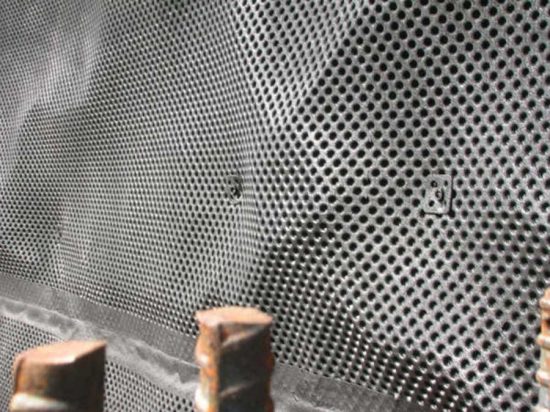 There is a move afoot by one company out of Toronto, Canada to provide the ICF industry with an innovative approach to protecting the below-grade portion of their ICF systems using a very common protection system in a radical new way. This new approach allows the ICF manufacturers and installers to provide the best overall protection that will also allow them to follow the green building initiatives for energy efficiency, efficiency of design, and commit to using only environmentally friendly products.
There is a move afoot by one company out of Toronto, Canada to provide the ICF industry with an innovative approach to protecting the below-grade portion of their ICF systems using a very common protection system in a radical new way. This new approach allows the ICF manufacturers and installers to provide the best overall protection that will also allow them to follow the green building initiatives for energy efficiency, efficiency of design, and commit to using only environmentally friendly products.
This new protection system uses the benefits of a high-density polyethylene (HDPE) plastic dimple sheet with an integral filtration fabric (geotextile) to provide the benefits of a dampproofing, capillary break, drainage system, wall waterproofing, ground water control, hydrostatic relief, and improved drainage system function all in one product. This product is referred to as a geocomposite dimple drain sheet.
This product is installed with the dimples facing outward—away from the foundation wall—which is opposite of traditional installation techniques. This reverse orientation is termed “positive side drainage protection.”
While either orientation provides protection of the foundation, there are differences in their installation and long term performance.
Just because a certain technique works for poured concrete and concrete block foundations does not necessarily dictate that these same benefits apply automatically to ICF systems.
In fact, one manufacturer of ICFs has recommended against the “dimples inward” drainage application, based on the idea that over time, they feel the air gap necessary for drainage could be lost due to compression of the dimples into the EPS foam used to make the blocks.
Based on the density of the foam material used to manufacture the most ICFs, this is a possibility with some brands. However, it should be noted that even if the air gap disappears, the membrane would still function as a waterproofing layer. Applications of thousands of homes has not shown any failure to provide the dampproofing or wall waterproofing properties that are intended by the HDPE membrane itself, and therefore can be considered a top quality method to provide these benefits for the life of the structure.
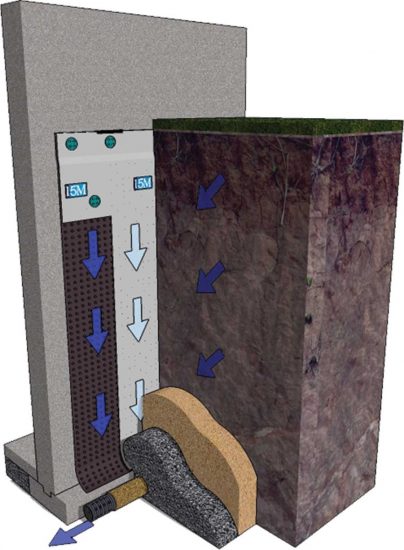 DMX Plastics has proposed reversing the dimple orientation to eliminate the possibility of the dimples compressing into the foam. Their position is that when backfilled against the ICF block wall system, the HDPE dimple sheet actually goes into tension rather than isolating compression points as the negative side drainage membranes do, and limits any compression (displacement) of the foam used for the blocks.
DMX Plastics has proposed reversing the dimple orientation to eliminate the possibility of the dimples compressing into the foam. Their position is that when backfilled against the ICF block wall system, the HDPE dimple sheet actually goes into tension rather than isolating compression points as the negative side drainage membranes do, and limits any compression (displacement) of the foam used for the blocks.
With the orientation of the positive side drainage system providing its draining capability on the exterior face of the HDPE dimple sheet membrane, with a geotextile creating an air gap between the dimples, the system never loses its ability to provide the much needed drainage over the service life of the structure. (This assumes that the geocomposite has been properly engineered to match the soil type).
The geomembrane also has a built-in measuring system. This makes the installers job is a lot easier.
Considering the cost of the typical self-adhering (peel-and-stick) membranes, positive side drainage systems can be very cost effective. Also, this system is not weather-dependent, as some peel-and-stick primers are, because it is mechanically fastened. This makes it a very good choice during the rainy seasons and cold winter months. The membrane is also made of 80+ % recycled post consumer resins, which provides the designer with an opportunity to add a “green” approach to his designs and can be applied toward LEED certification.
The material used to make the dimpled sheet has been approved by the Canadian Construction Materials Centre (CCMC) and International Code Council Evaluation Service (ICC-ES) of the United States for its abilities to provide the necessary dampproofing and wall waterproofing capabilities. The membrane passed all tests and is now listed as an appropriate alternative to other systems listed in the respective building codes where dampproofing or wall waterproofing is required. The membrane is listed by ICC-ES as a suitable alternative for use on ICF block foundation wall systems for dampproofing and wall waterproofing.
The use of a positive side drainage and protection system also limits lateral forces which can be exerted onto foundation walls in moisture-sensitive clay and silt. The geotextile fabric bonded to the HDPE dimpled core provides excellent filtration, which allows the drainage property of the membrane to function during the full design service life of the building it protects.
As we move toward a more environmentally conscious method of construction, there is a need for an affordable and innovative waterproofing and drainage system.
This innovative installation technique will hopefully benefit all players in the construction industry, and make ICFs an even more favourable choice for the future.
Dwight Walker is technical services manager at DMX Plastics Limited.

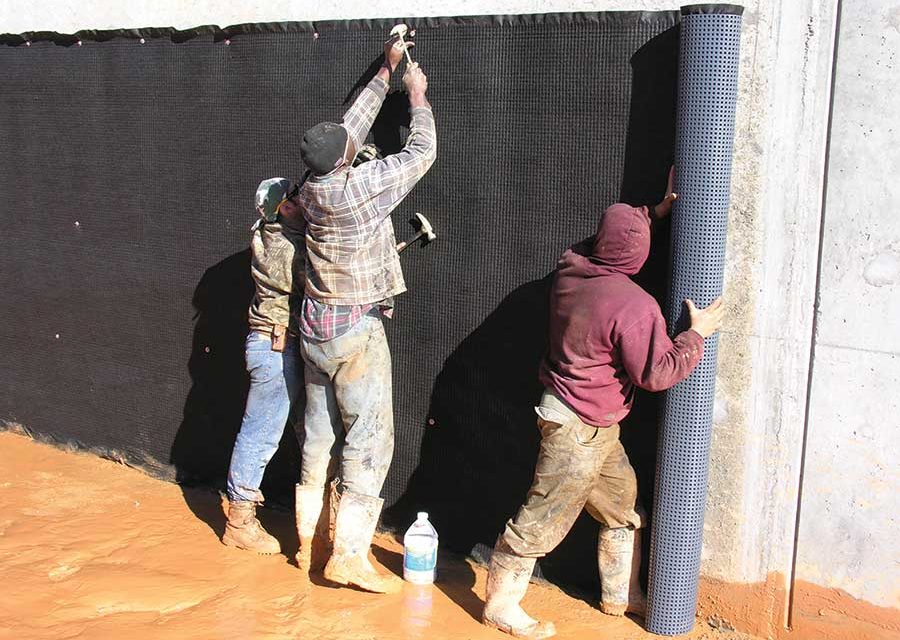
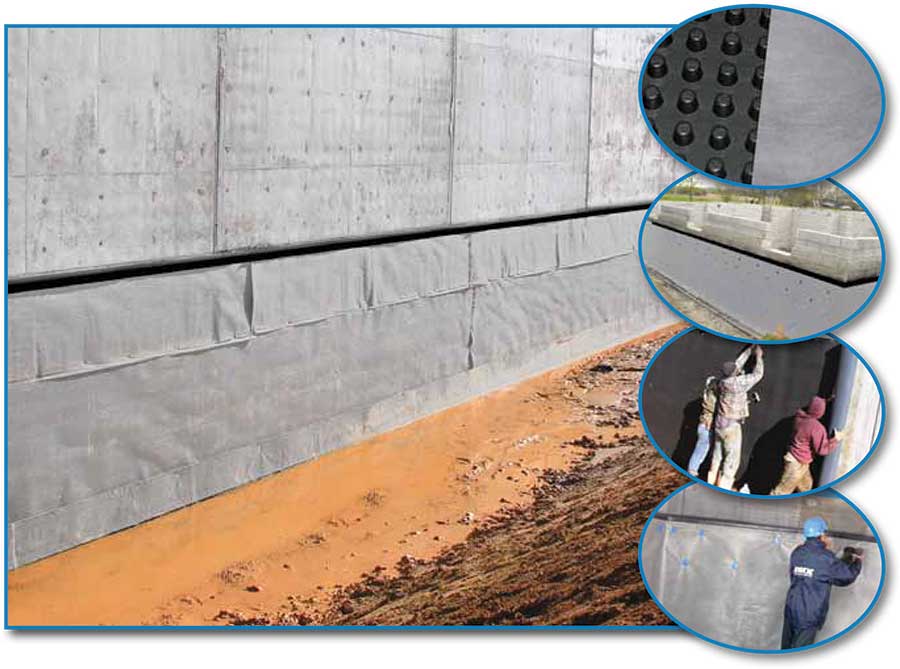
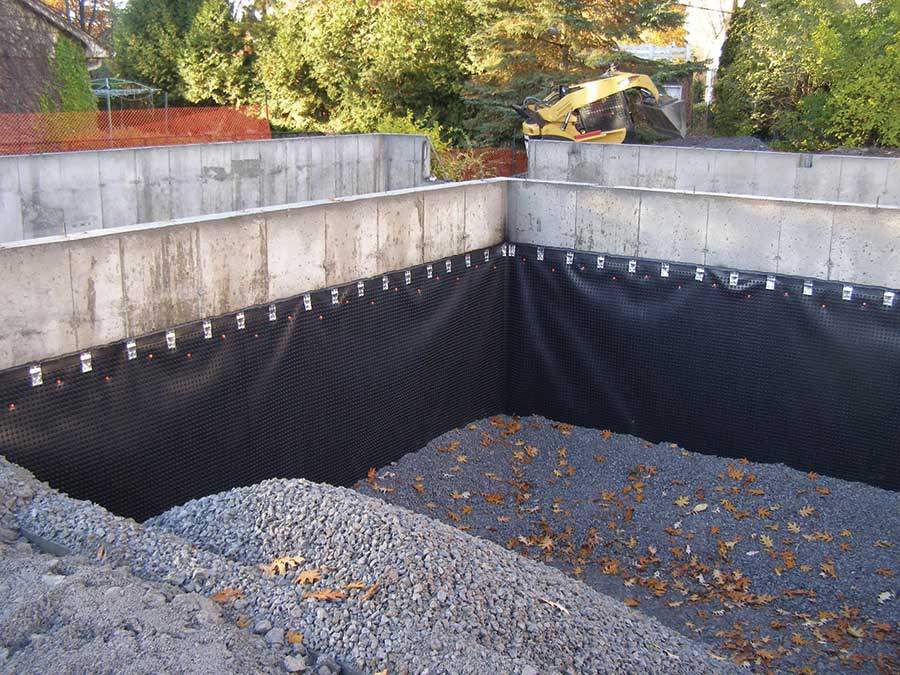

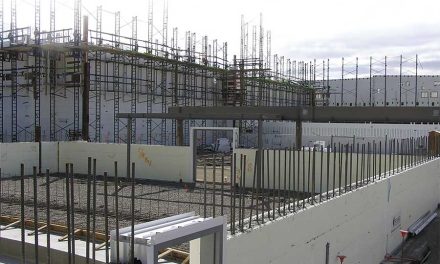

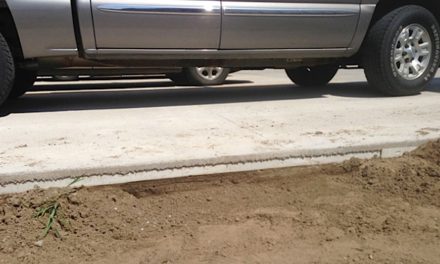
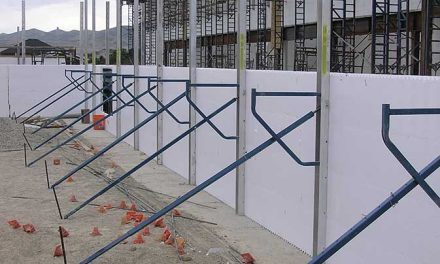


April 23, 2020 Sirs: may I have permission to use one of the photos on this webpage https://www.icfmag.com/2013/01/geocomposite-drainage-for-icf-foundations/ in my pending book on Ground Improvement? The picture of the wall drain being installed is sought.
Thanks!
Dave
David J. Elton, PhD., P.E., F.ASCE
Professor Emeritus
Civil Engineering Department
Auburn University, AL 36849
1 334 319 3119
elton@eng.auburn.edu
The picture you reference is reprinted with permission of DMX Plastics. I’ve sent you an email with their contact information.